Breeding For Efficiency LIC Series

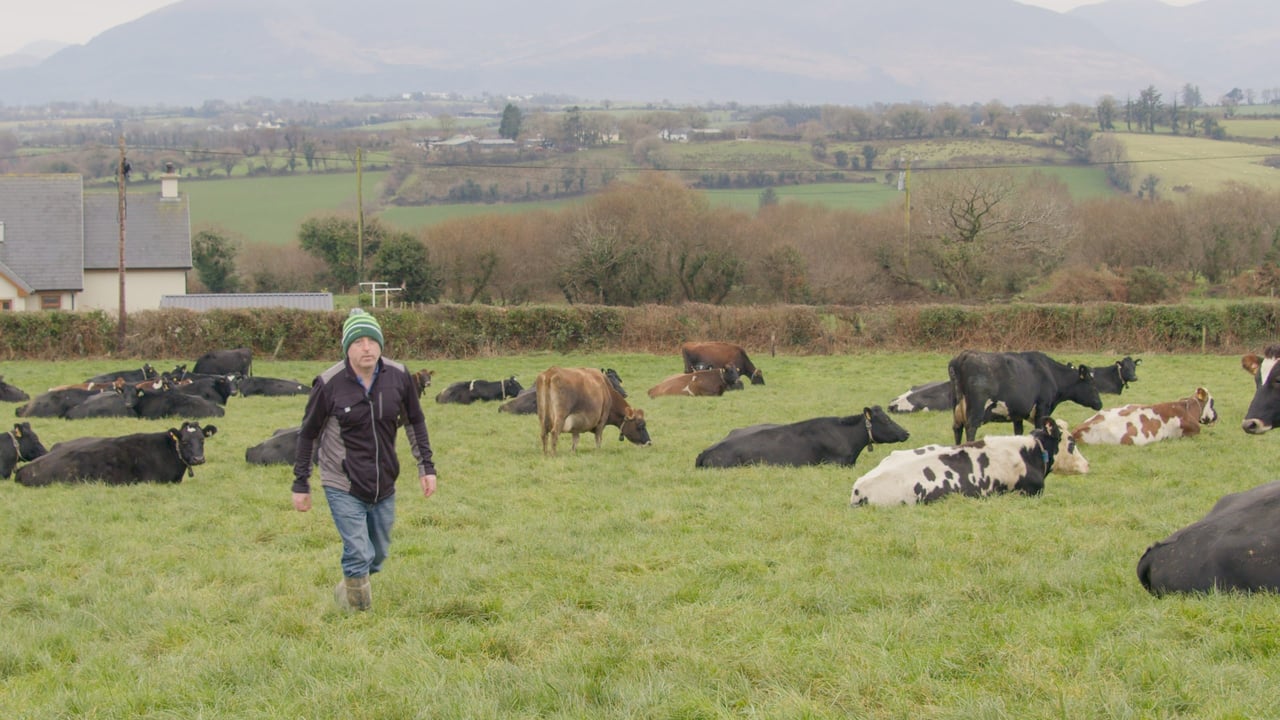
Breeding for Efficiency Series: Maintaining solids with OAD milking
Agriland Media Group is delighted to collaborate with LIC Ireland to bring you the ‘Breeding For Efficiency Series’.
Dairy farmer, Edward O'Sullivan is farming just outside Killarney, Co. Kerry where he is maintaining solids while "partially" once-a-day (OAD) milking 80 Jersey cross cows with his wife and three children.
The crossbred herd are milking on 70ac and Edward said that "the herd we are running here is different to the standard herd that are milking twice-a-day".
The system Edward is running is partially once-a-day (OAD) and partially twice-a-day throughout the lactation without having an impact on milk solids.
The big emphasis on the farm is fertility and days in milk, as Edward is able to get the cows in milk for 295 days and that is what is driving the solids on the farm along with the genetics.
Edward started off as a new entrant in 2014 and has just concluded his eleventh season of milking, and he originally bought cows from John Sullivan from Kinsale which he said was an "exceptional herd" and laid the foundation for the farmer.
The farmer emphasised that he started off with the right genetics and said it was easy to build on from there, as a few of the cows that came from that herd are still milking on their eleventh lactation.
OAD milking
Edward's herd starts calving from mid- to late February where he carries out OAD milking from mid- to late April and then switches back to twice-a-day until mid- to late August.
The farmer then switches back to OAD milking until drying off before Christmas.
The herd is doing over 500kg of milk solids (MS) while doing over 4% protein and over 5% fat while spending around 60% of the lactation OAD milking in 2024.
The dairy herd performance co-op report for 2023 is as follows:
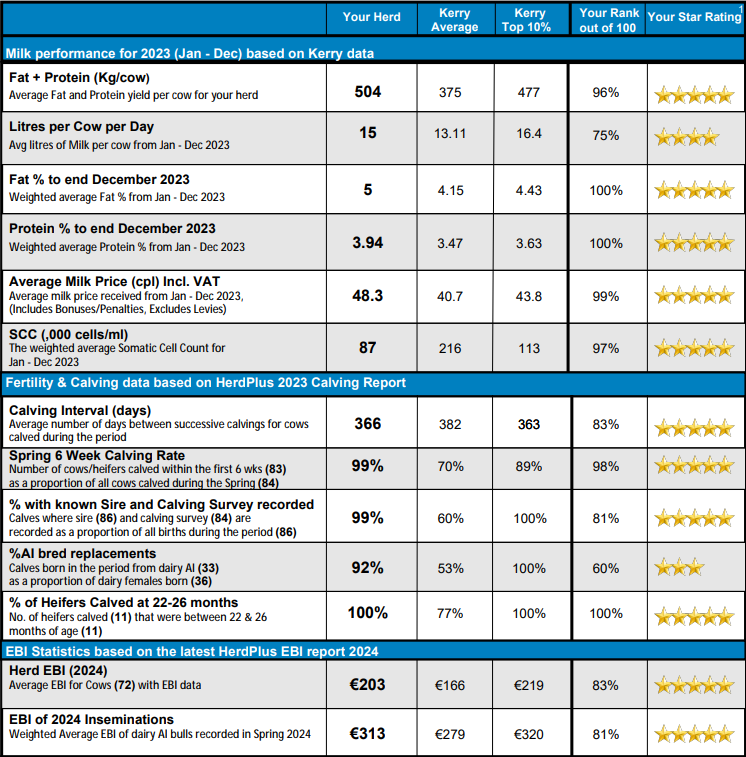
Edward said that "with OAD [milking], you'll see a drop in production as we are losing about 12% to 15% due to the fact we are 60% of the lactation OAD milking", but the farmer said a farm would still not lose that level of profit.
He said if you take into account the electricity saving, the amount of detergent used, the labour costs on the farm, "you are not losing out on profit and you have healthier cows".
"What you are gaining is health in the cow; you are also getting better fertility, better condition and reducing your workload."
The fertility in the herd is excellent as a result and the excellent genetics he has bred into the herd, meant 95% of the herd calved in six weeks.
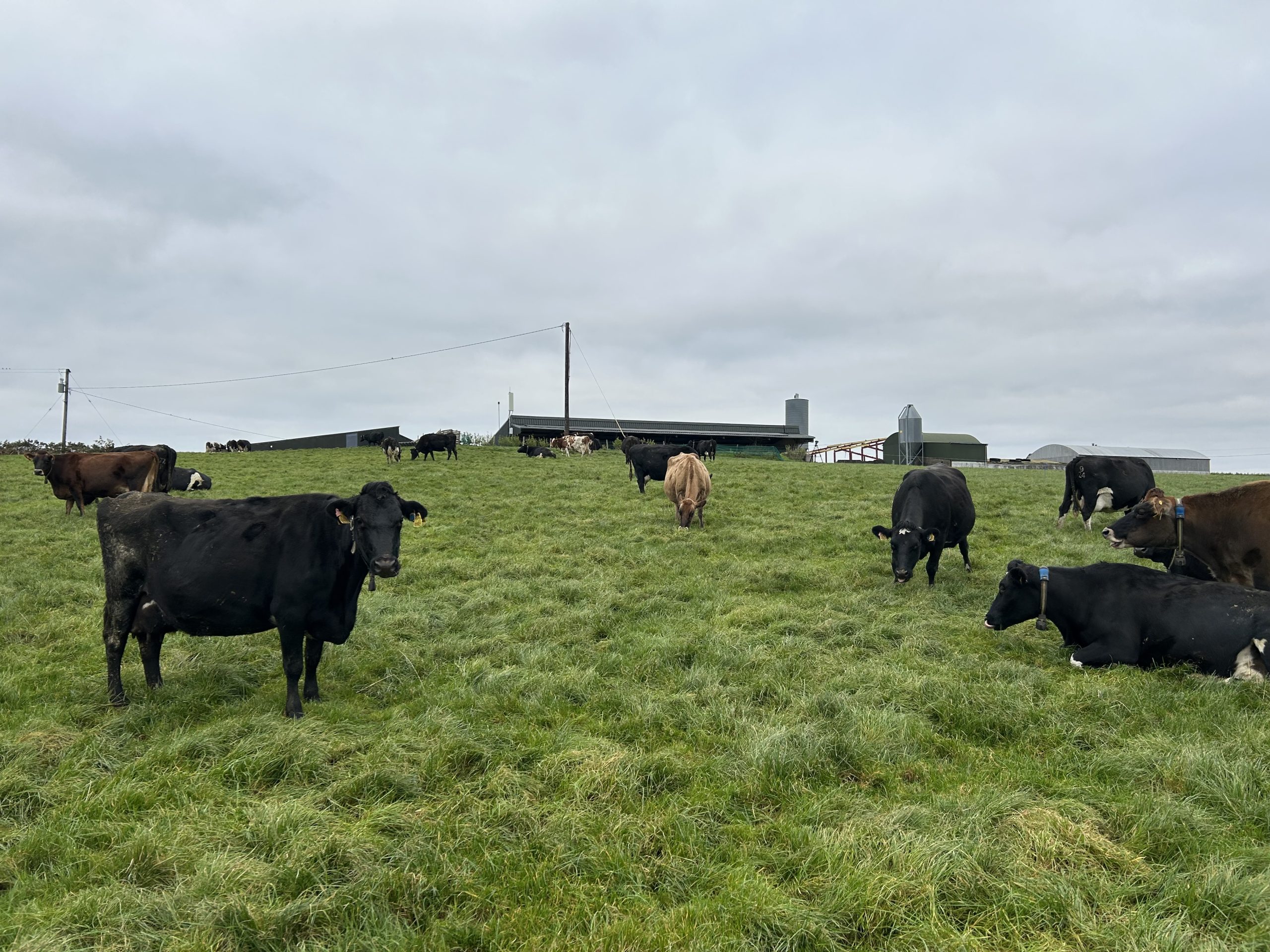
"There is enough going on in the spring time and it is nice to reduce the work load," Edward added.
Commenting on the benefits of OAD milking, Edward said "just to be able to reduce the workload in early spring and it's nice to switch over in the back end, and we are not pushed to get up too early in the morning while we still get the jobs done".
The farmer would not have the highest replacement rate on the farm as he has good fertility, health and production and is still driving profits as he only aims for a replacement rate of about 15%.
The aim for the farmer is to maintain production at 500kg of milk solids and go even further once-a-day, and he said "we are probably losing out on about 60-70kg of milk solids a year with once-a-day but we are not concerned".
Breeding
Breeding season starts on May 15 and the farmer carries out pre-breeding scans prior to that period, adding that he would probably have 20% of the herd that are not suitable based on milk recordings, slow milkers, and poor health traits.
"When the vet scans again, he will probably pick out another 20% of the herd that are not suitable for sexed semen which leaves us with roughly 60% that are suitable for dairy sexed semen," he explained.
Artificial insemination (AI) is carried out in the morning and evening and the collars will give the optimum time to go in with sexed semen which he finds successful for getting decent returns with sexed semen.
The farmer will use up all his sexed semen straws and will follow after with suitable dairy-beef bulls with good carcass weights and short gestation being the key traits.
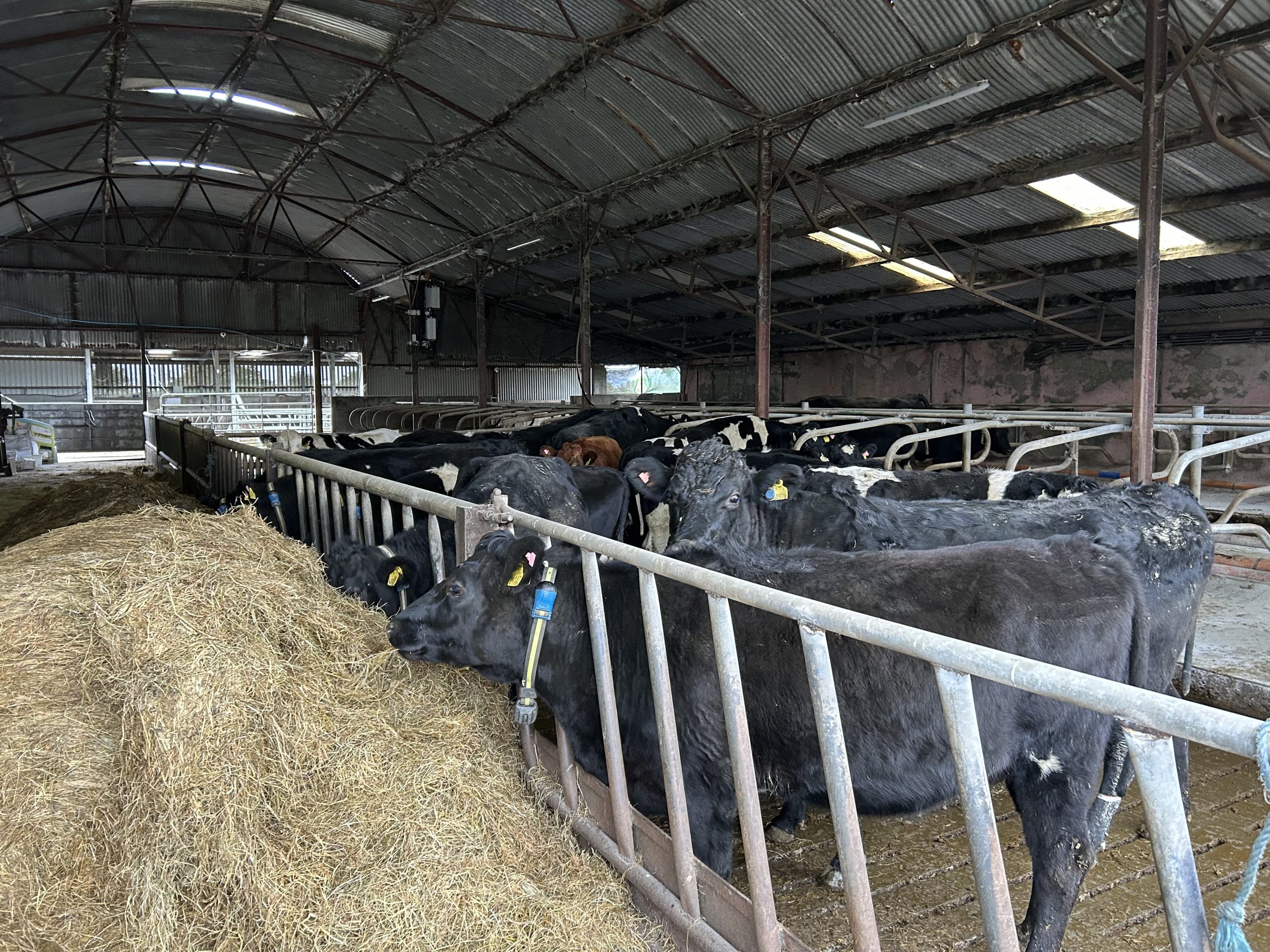
The farmer has used a lot of Friesians over the last couple of years, but went back to using Kiwi-cross straws to bring down the size and maximise production.
Edward is able to select his Jersey-cross bulls through LIC, using New Zealand's breeding worth (BW) system, which allows him to choose cows that are suitable for OAD, as there is a variable milking selection index on the BW system.
The aim of the breeding programme and the farm system is to "try and knock 110-120% of the cows' bodyweight into milk solids and there are some cows in the herd doing that".
The jersey brings the hybrid vigour to the system and this improves the health of the cow and those Jersey Kiwi-cross cows are "more aggressive" when it comes to grazing according to the farmer.
"They're a smaller cow but they are easy to put condition on", Edward told Agriland and he highlighted the concern that people have with the calf and the culling of the cow.
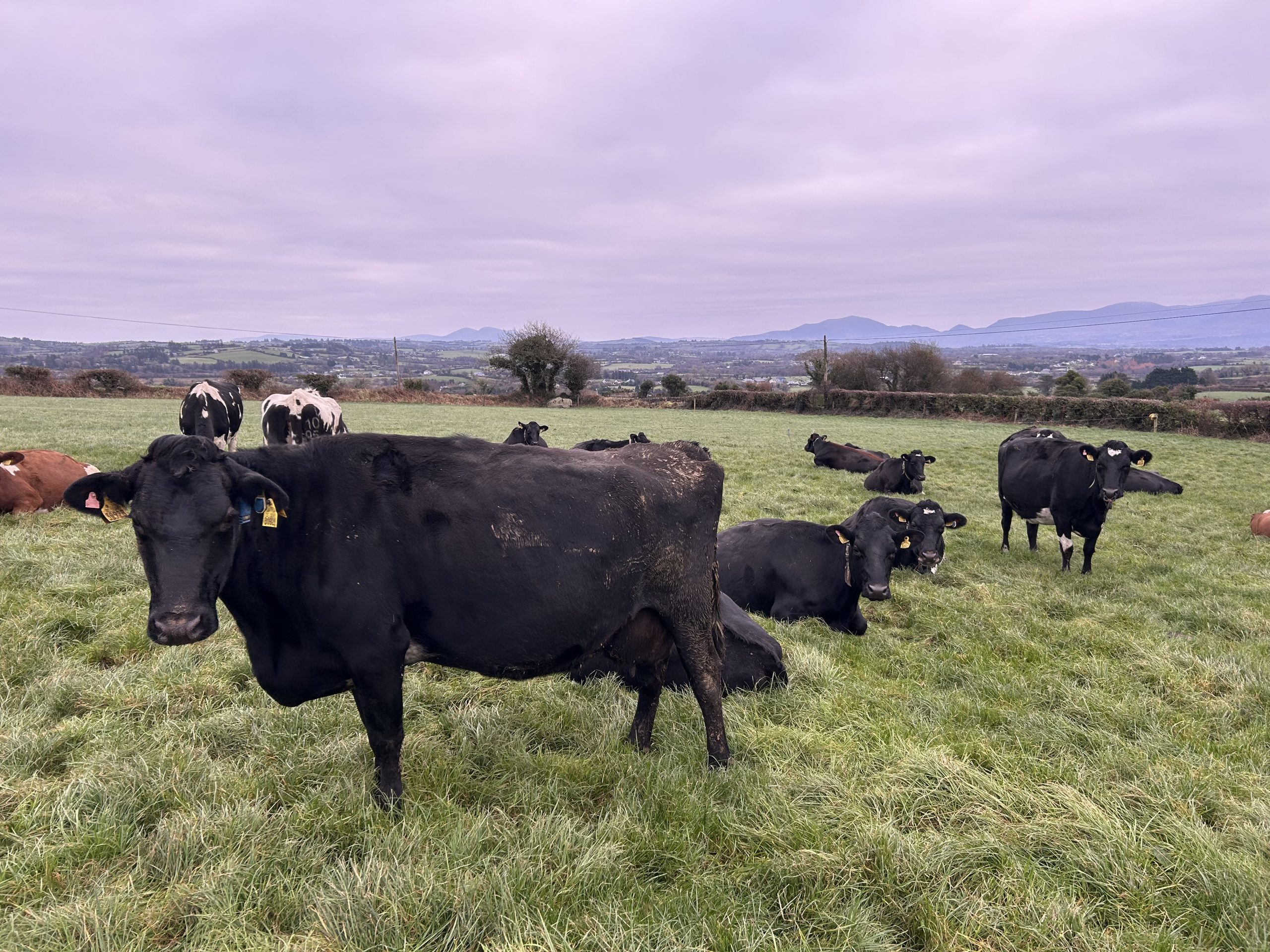
"I come from a suckler background, so I know beef as good as most beef fellas; the key with the Jersey genetics is that they put on condition and even as cull cows they are still coming into better money than most Holstein Friesians.
"What they are looking for in marts and factories is flesh; they don't want bone; I've yet to see anyone chew on a bone apart from a dog," Edward added.
Edward said that they are breeding a healthy cow, and driving milk solids and not concerned about driving litres which is the key for his system.
The OAD milking in the shoulders of the year also allows him to go to football matches and get out and about, having a better lifestyle, and he said this only doable with the type of cow he has, a cow that suits that level of OAD milking.